
Chef’s knife
- Kitchen utensils
How to choose: knives for fine mincing, slicing, cutting bread, vegetables, and meat? The most pleasant way to prepare beautiful and tasty dishes – is by cooking with your own hands. In the kitchen, there are a lot of different tools that make this work easier and more accessible to anyone. The correct choice of tools will not make life easier for you but will create a new kind of pleasure when cooking delicious food.
Different kinds of kitchen knives are used for different things. It’s important to know the difference between them so you can choose the right tool for the job.
What kind of knives are needed in the home kitchen?
Buying your first set of knives can be intimidating, especially when there are so many to choose from. That’s why we’ve made it easy for you to find the perfect knife for your everyday cooking needs. Here are four types of knives you should never be without.
- chef’s knife
- steak knife
- vegetable knife
- bread knife
You don’t need a lot of knives to cook, these four are enough to make a delicious meal.
Chef’s knife
The chef’s knife is an all-purpose kitchen knife that will meet all your chopping, slicing, and dicing needs. It has a wide and long (6—8 inch) blade. Its long, wide blade allows more control over larger cuts of meat and vegetables. Choose one that is comfortable for you to hold in your hand.
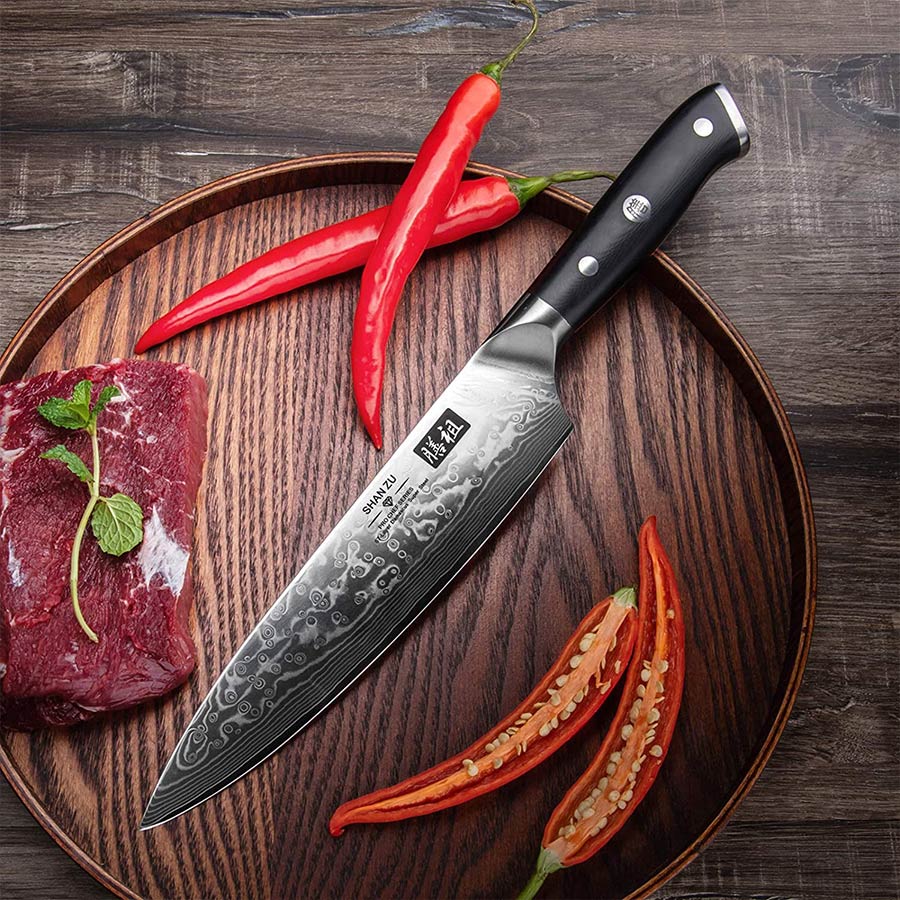

Chef’s knife
- Kitchen utensils
Fillet knife
A medium-thick fillet knife with a flexible blade and a very sharp tip, making it ideal for cutting meat and fish fillets. Its design allowing you to carefully and precisely carve bones and poultry.
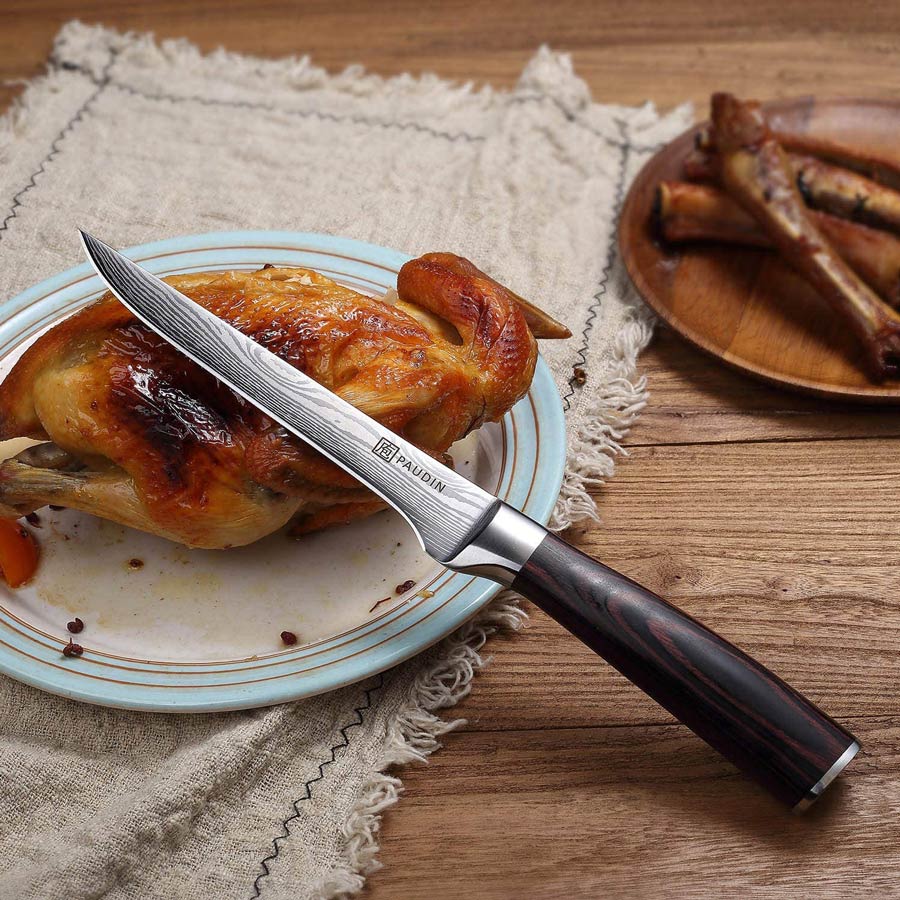

Fillet knife
- Kitchen utensils
Vegetable knife
A small knife with a thin blade 3—4 inches long is indispensable for small jobs. This small knife works wonders on a variety of fruits and vegetables. It is easy to use and great for everyday veggies.
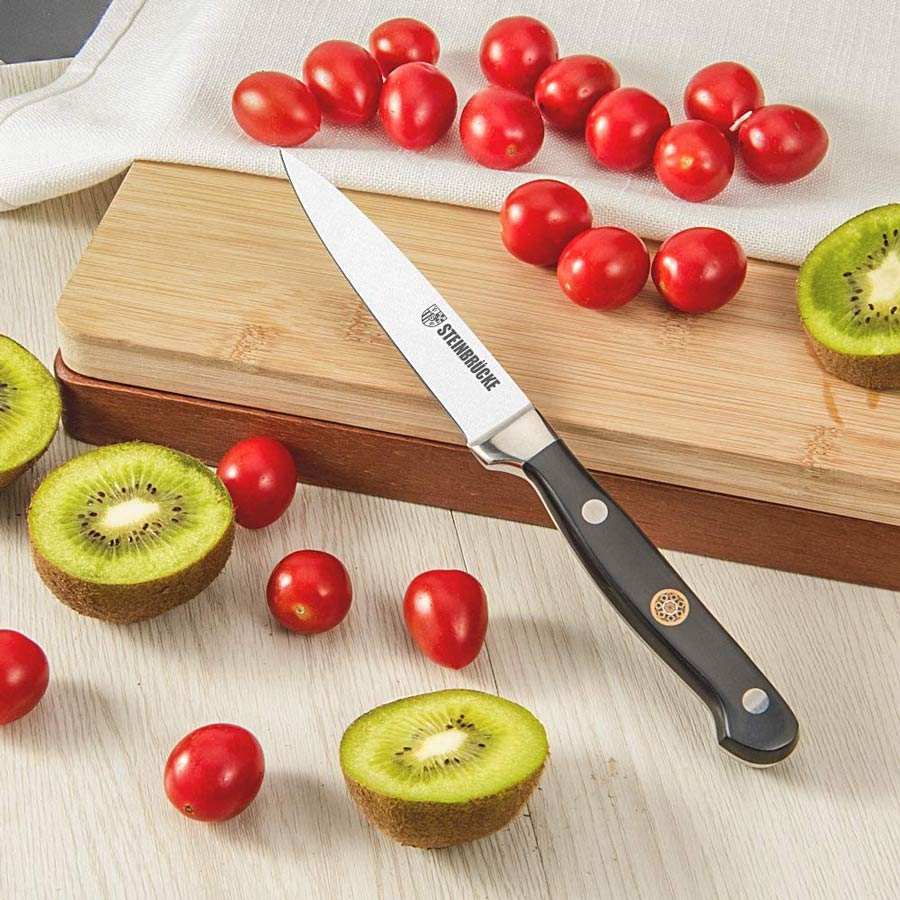
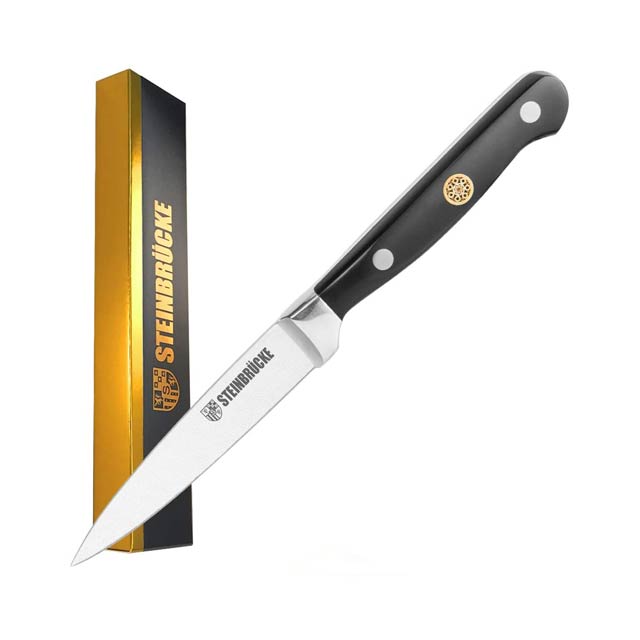
Vegetable knife
- Kitchen utensils
Bread knife
The name says it all. It’s perfect for cutting bread, cakes, vegetables, large pieces of meat, sausages, salads, and much more. It features a long (7—11 inch) blade. The blade is very sharp combined with a serrated cutting edge, which makes it easy to cut through the hard crust. It is very easy to use.
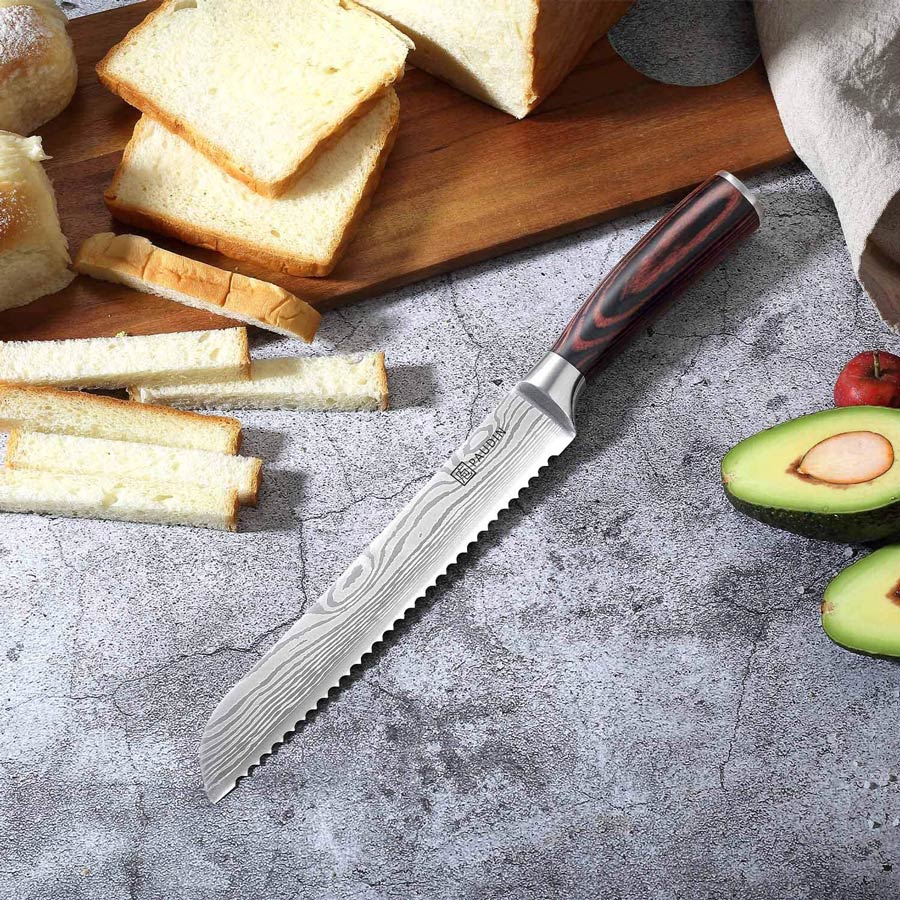

Bread knife
- Kitchen utensils
How to choose the perfect knife
While shopping for a new kitchen knife, consider what you liked and didn’t like about your previous knives. There is a long list of factors you should take into account when choosing a new knife. The best way to learn what works best for you is to experiment with different features.
- Did you find the handle comfortable?
- Was it heavy?
- Was the knife so easy to use that you never had to put any effort into cutting?
- How frequently did you have to sharpen it?
By knowing which features are most important to you, you can make an informed decision about which knife you want to have in your kitchen.
Steel or ceramic knife?
Common and suitable for home use, steel and alloy knives do not require much maintenance. Thanks to the alloys and advanced heat treatment techniques involved in their fabrication, alloys and stainless steel knives maintain a sharp edge for long periods. These knives can be easily sharpened and require little maintenance.
- High-carbon steel knives cut better, are made from a harder material, and don’t lose sharpness over time as quickly. They require more care as they are quite fragile, rusts more quickly compared to other materials. Sharpening these knives could be problematic.
- Ceramic knives are lighter than steel knives. These knives do not need special care and they are more hygienic. Many people prefer ceramic knives because they cut with less drag than steel, so foods don’t stick to the blades. They are also resistant to rusting and moisture, and they don’t need special care. Ceramic knives are less durable, they cannot be used to cut bones, and they cannot be sharpened at home as they require professional sharpening.
Blade
The blade of a good knife should be smooth, and with high-quality stainless steel knives, the surface should mirror-like.
- The surface of the blade should be free of scratches, streaks, various roughness, and notches.
- Forged blades are denser and take longer to dull than mass-manufactured knives.
- The blade of a chef’s knife should be a little thicker than the average knife and not too thin. Also, the blade should not bend and be of average weight.
- The size of the blade is determined by the hand of the cook – if your hand is large, then you can afford to use larger blades.
- Men are more likely than women to appreciate a classic stainless steel chef’s knife that’s 7—9 inches long. Women are best suited for universal 6—7 inches long knives. Universal knives are a cross between a classic chef’s knife and a slicer.
- The blade must run along the entire length of the handle. The ground rivets on the handle must be firmly attached to the base and not stick out from the grooves. Molded plastic handles without rivets may not hold well.
Edge
The surface of the blade should be smooth and shiny, without any dents or chips. It is good if a shiny continuous line runs from the handle to the very tip. Choose knives with regular double-sided blade sharpening.
Handle
The handle should be durable, with no gaps and traces of welding on the joints.
- The handle should be not only comfortable but also provide a good grip and not slip even in a wet hand.
- If the handle is made from wood, then its appearance can quickly deteriorate if it is not processed.
- Ideally, the rear edge of the blade should end with a stop that prevents your toes from sliding onto the blade.
Convenience
Use your old knife to better evaluate your option of buying a balanced knife. Would you prefer a knife with a heavier handle, with a heavier blade, or with both equally balanced?
Check the weight and design of the knife to find out whether it will fit your hand well. How comfortable the thickness of the handle?
How to store knives
- These knives require special storage, separate from the rest of your devices. You can mount them on a wall with a magnetic strip, or store them on the counter in a block or dock.
- Protect the blades from rubbing, impacting each other, and other metal objects.
- Do not use glass and stone cutting boards. Wood and plastic boards are perfect for the job.
- Do not leave knives in water – wipe dry shortly after washing. Especially after cutting lemons and onions.
- Wash professional knives by hand, kitchen knives dull much faster in a dishwasher.